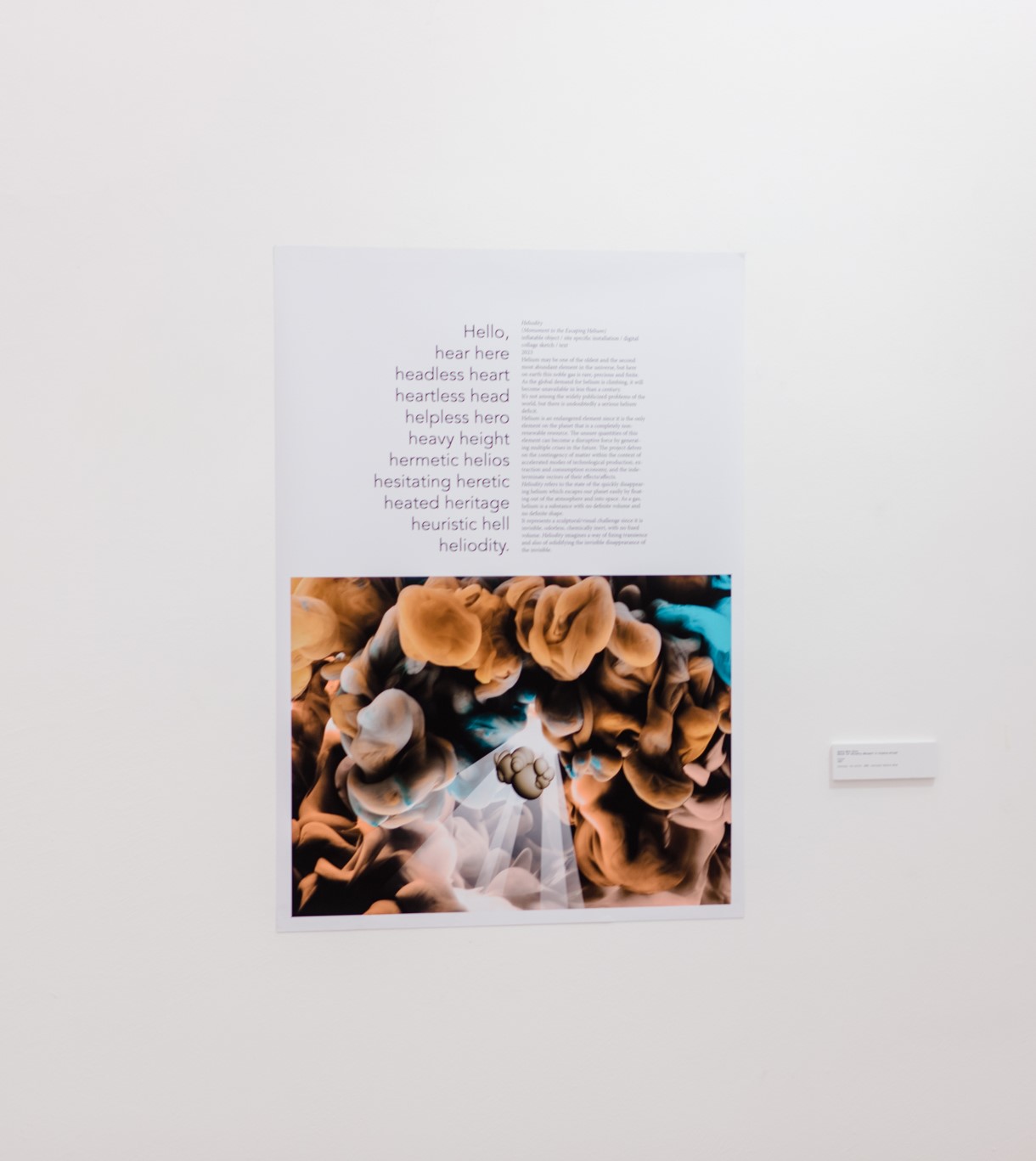Helium may be one of the oldest and the second most abundant element in the universe, but here on earth this noble gas is rare, precious and finite. As the global demand for helium is climbing, it will become unavailable in less than a century. It’s not among the widely publicized problems of the world, but there is undoubtedly a serious helium deficit. Helium is an endangered element since it is the only element on the planet that is a completely nonrenewable resource. The unsure quantities of this element can become a disruptive force by generating multiple crises in the future. The project delves on the contingency of matter within the context of accelerated modes of technological production, extraction and consumption economy, and the indeterminate vectors of their effects/affects.
Heliodity (Monument to Escaping Helium) refers to the state of the quickly disappearing helium which escapes our planet easily by floating out of the atmosphere and into space. As a gas, helium is a substance with no definite volume and no definite shape. It represents a sculptural challenge since it is invisible, odorless, chemically inert, with no fixed volume. The inflatable object imagines a way of fixing transience and also of solidifying the invisible disappearance of the invisible.
Sketch for Heliodity (Monument to Escaping Helium)
National Museum of Art Timisoara
26.09-30.11.2023
Curated by Anja Lückenkemper

The project “Blue Sun. Conversations on art, science, and ecology” benefits from a 93960 Euro grant from Iceland, Liechtenstein and Norway through the EEA and Norway Grants.
The EEA and Norway Grants represent the contribution of Iceland, Liechtenstein and Norway towards a green, competitive and inclusive Europe. There are two overall objectives: reduction of economic and social disparities in Europe, and to
strengthen bilateral relations between the donor countries and 15 EU countries in Central and Southern Europe and the Baltics. The three donor countries cooperate closely with the EU through the Agreement on the European Economic Area (EEA). The donors have provided €3.3 billion through consecutive grant schemes between 1994 and 2014. For the period 2014-2021, the EEA and Norway Grants amount to €2.8 billion. More details are available on: www.eeagrants.org and www.eeagrants.ro



